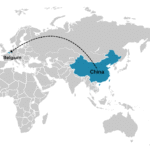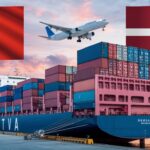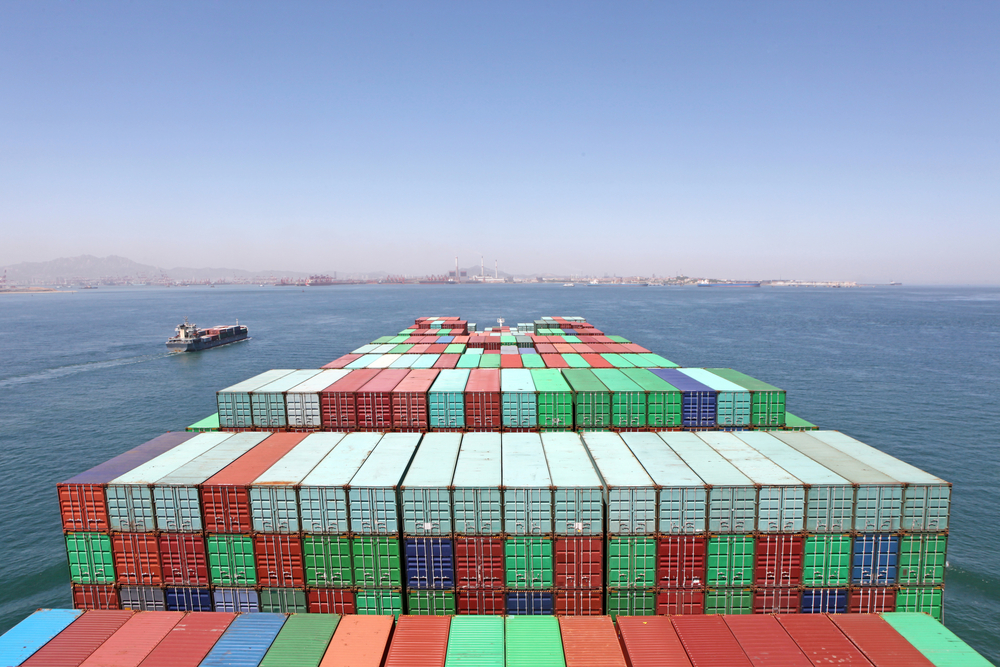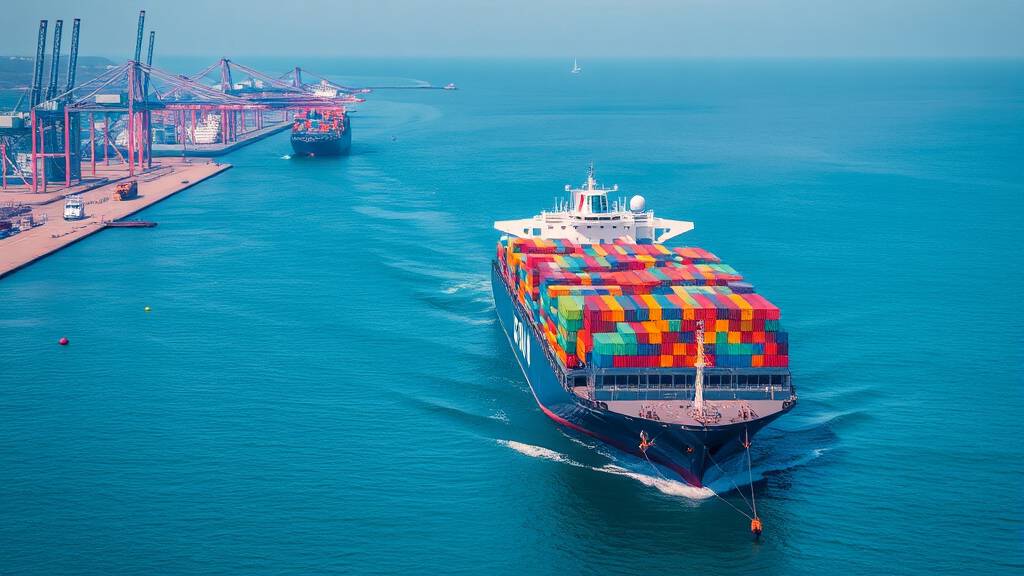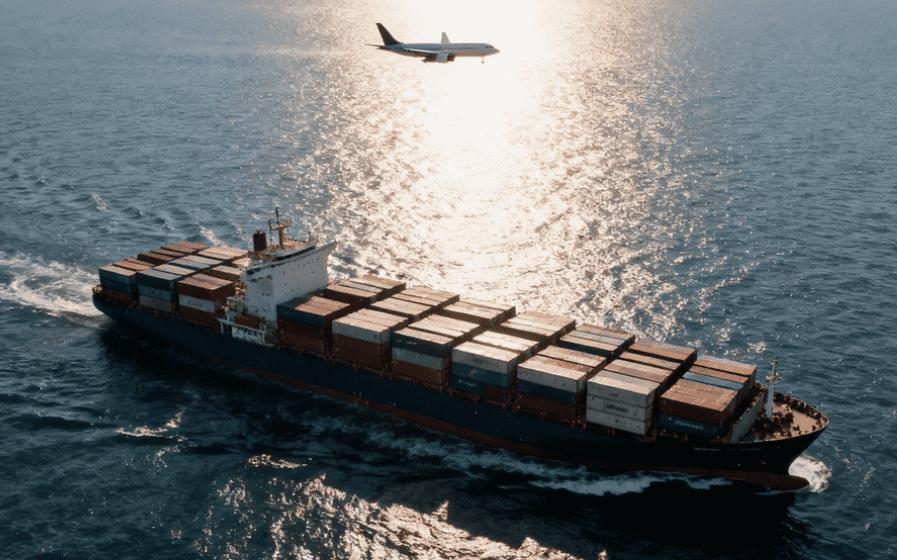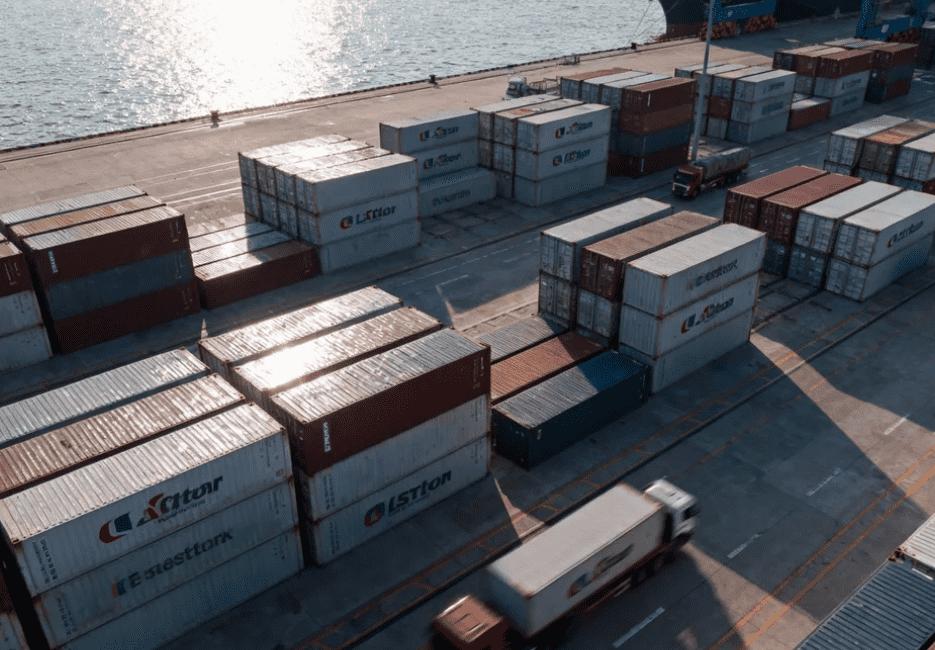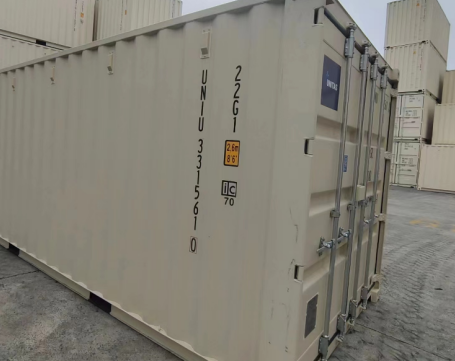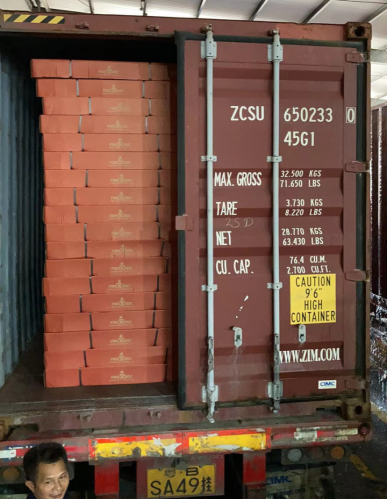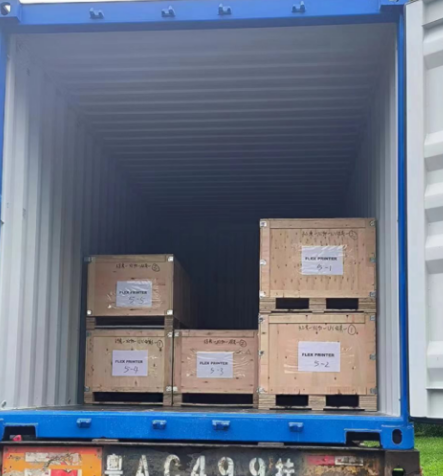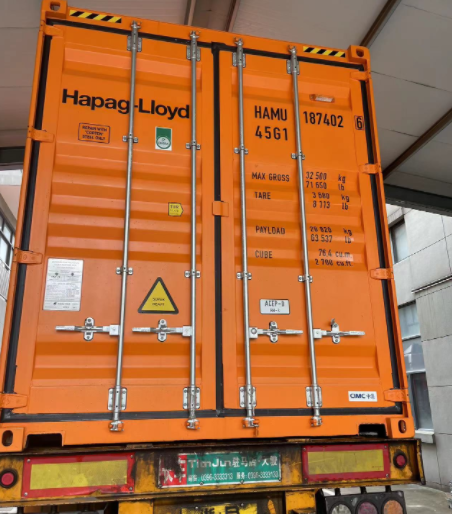Are you considering shipping from Shenzhen to Belgium but unsure about the best methods and costs?
In this comprehensive guide, we will explore various shipping methods such as sea freight and air freight, provide detailed insights on shipping costs, and discuss essential factors like choosing a reliable freight forwarder and understanding customs clearance. By the end of this article, you’ll be equipped with the knowledge needed to navigate the complexities of international shipping and ensure a smooth delivery process.

Shipping Methods from Shenzhen to Belgium
When it comes to shipping from Shenzhen to Belgium, businesses and individuals can choose between various methods to suit their needs, particularly sea freight and air freight. Each method has its own advantages and is suited for different types of cargo and timelines.
Sea Freight from Shenzhen to Belgium
Sea freight is one of the most popular shipping methods for large volumes of goods due to its cost-effectiveness, especially for bulky and heavy items. The primary advantage of sea freight is its ability to handle substantial cargo loads, which significantly reduces the cost per unit.
Container Shipping: Most sea freight is conducted using container ships. There are two main types of containers: Full Container Load (FCL) and Less than Container Load (LCL). FCL is ideal for large shipments, while LCL allows for sharing container space, making it a suitable option for smaller shipments. To understand more about these options, check out what is LCL and FCL in shipping.
Duration: The transit time for sea freight from Shenzhen to major Belgian ports, such as Antwerp and Zeebrugge, typically ranges from 30 to 45 days, depending on the shipping line and specific route taken.
Cost Efficiency: Sea freight is generally cheaper than air freight. A 20-foot container shipment from Shenzhen to Antwerp might cost between $1,200 to $1,500 in 2025, but prices can vary based on market conditions. For more detailed cost analysis, visit Container shipping costs from China to USA.
Overall, sea freight is an effective choice for businesses looking to minimize shipping costs while accommodating larger shipments.
Air Freight from Shenzhen to Belgium
Air freight is the fastest shipping method available, making it ideal for perishable goods, high-value items, or urgent shipments.
Speed: Air freight significantly reduces transit time, typically delivering goods from Shenzhen to Belgium within 5 to 10 days. This speed is crucial for businesses that require rapid replenishment of inventory or need to meet tight deadlines. Learn about air freight from China to USA for comparative insights.
Cost: However, air freight comes at a premium price. In 2025, the cost for shipping a standard cargo of around 100 kg from Shenzhen to Brussels by air is estimated to be between $5 to $10 per kg, depending on the specifics of the shipment and the airline used.
Ideal for Specific Cargo Types: Businesses often prefer air freight for electronics, pharmaceuticals, or high-value items where the speed of delivery outweighs cost considerations.
In conclusion, air freight is best suited for urgent shipments that require fast delivery, while sea freight is preferable for larger and less time-sensitive cargo. Choosing between these methods depends on the specific needs of your shipment, budget, and timeline.
Shipping Costs from Shenzhen to Belgium
Understanding the costs involved in shipping from Shenzhen to Belgium is crucial for budgeting and financial planning, especially in 2025, as shipping rates can fluctuate due to various factors such as demand, fuel prices, and global trade policies.
2025 Sea Freight Cost Analysis
For 2025, the sea freight costs can be summarized as follows:
| Container Type | Estimated Cost (USD) | Transit Time |
|---|---|---|
| 20-foot FCL | $1,200 – $1,500 | 30-45 days |
| 40-foot FCL | $2,300 – $3,000 | 30-45 days |
| LCL (per cubic meter) | $100 – $150 | 30-45 days |
This table indicates that shipping costs for sea freight remain relatively stable, making it a preferred option for bulk shipments.
2025 Air Freight Cost Analysis
For air freight, the cost analysis in 2025 is as follows:
| Weight of Shipment | Estimated Cost (USD/kg) | Estimated Transit Time |
|---|---|---|
| Up to 100 kg | $5.00 – $10.00 | 5-10 days |
| 100 kg to 500 kg | $4.50 – $9.00 | 5-10 days |
| Above 500 kg | $4.00 – $8.00 | 5-10 days |
This cost analysis highlights that while air freight is more expensive than sea freight, it offers significant advantages in terms of speed, making it an essential option for time-sensitive shipments.
In summary, understanding the shipping methods and costs from Shenzhen to Belgium can help businesses make informed decisions tailored to their logistical needs, whether they prioritize cost-effectiveness or speed. For those looking for a reliable freight forwarding partner, Dantful International Logistics offers a comprehensive range of services that are cost-effective and of high quality, ensuring your shipments are handled with professionalism and care.
Read More:
- Shipping From China To Netherlands
- Shipping From China To Spain
- Shipping From China To Germany
- Shipping From China To France
- Shipping From China to Italy
- Shipping From China To Poland
- Shipping From China to United Kingdom
Shipping Times from Shenzhen to Belgium
Estimated Shipping Times for Sea Freight
When it comes to shipping from Shenzhen to Belgium, sea freight is a popular choice due to its cost-effectiveness for larger cargo volumes. However, it is important to note that the transit time can vary significantly based on several factors, including the shipping line, the specific ports used, and potential transshipment delays. Typically, the estimated shipping time for sea freight from Shenzhen to the major ports in Belgium, such as Antwerp or Zeebrugge, ranges from 30 to 45 days. For detailed information on shipping times, you can refer to our guide on Shipping From China to Belgium.
| Shipping Method | Estimated Time Frame | Key Factors Influencing Time |
|---|---|---|
| Sea Freight | 30 – 45 days | Shipping line, port congestion, customs clearance, weather conditions |
Estimated Shipping Times for Air Freight
For businesses that require faster delivery, air freight is the preferred option. The transit time for air freight from Shenzhen to Belgium is significantly shorter, typically taking about 5 to 10 days. This service is ideal for time-sensitive shipments, but it comes at a higher cost compared to sea freight. If you want to know more about costs, you can explore air freight from China to USA.
| Shipping Method | Estimated Time Frame | Key Factors Influencing Time |
|---|---|---|
| Air Freight | 5 – 10 days | Flight schedules, customs processing, airport congestion |
Selecting a Reliable Freight Forwarder in Shenzhen
Criteria for Choosing the Right Freight Forwarder
Selecting a reliable freight forwarder is crucial for ensuring a smooth shipping experience. When choosing a freight forwarder in Shenzhen, consider the following criteria:
- Experience and Expertise: Look for a provider with a proven track record in handling shipments to Belgium, as local regulations and logistics networks can vary.
- Service Offerings: Ensure that they offer a comprehensive range of services, including ocean freight, air freight, customs clearance, and cargo insurance. For options, check out our Shipping From China to Belgium.
- Customer Reviews and Reputation: Research customer testimonials and reviews to gauge the reliability and quality of service provided.
- Transparent Pricing: A good freight forwarder should provide clear and detailed quotes without hidden fees.
Benefits of Working with an Experienced Logistics Partner
Collaborating with an experienced logistics partner, such as Dantful International Logistics, offers several advantages, including:
- Customized Solutions: Tailored shipping solutions based on your specific needs, whether for sea freight or air freight.
- Efficient Customs Clearance: Expertise in handling customs processes minimizes delays and ensures compliance with Belgian regulations.
- Real-time Tracking: Access to advanced tracking tools that provide real-time updates on your shipment’s status.
- Risk Mitigation: Professional advice on insurance options and risk management strategies to protect your goods during transit.
Questions to Ask Your Freight Forwarder
To ensure you select the right freight forwarder, prepare a list of questions that can clarify their capabilities and fit for your shipping needs:
- What experience do you have with shipments to Belgium?
- What services do you offer beyond transportation, such as warehousing or customs clearance?
- How do you handle delays or unexpected issues during transit?
- Can you provide references from previous clients shipping to Belgium?
- What are your pricing structures, and are there any additional fees we should be aware of?
By asking these questions, you can gain valuable insight into the freight forwarder’s capabilities and reliability, ensuring a smoother shipping experience for your imports from Shenzhen to Belgium. If you’d like to learn more about door-to-door services, visit our page on door to door shipping from China to Belgium.
Customs Clearance Process for Shipping to Belgium
Understanding Belgium’s Import Regulations
When shipping goods from Shenzhen to Belgium, it’s crucial to understand the country’s import regulations to ensure a smooth customs clearance process. Belgium, as a member of the European Union (EU), adheres to specific import rules that align with EU regulations.
Tariff Classification: The first step is to classify your goods according to the Harmonized System (HS) codes, which determines the applicable duties and taxes. It is recommended to consult with a freight forwarder for accurate classification.
Duties and Taxes: Import duties in Belgium depend on the nature of the goods. Generally, the VAT (Value Added Tax) is applicable at a standard rate of 21%. However, certain goods may be subject to reduced rates or exemptions.
Prohibited and Restricted Items: Familiarize yourself with items that are prohibited or restricted from importation into Belgium, such as certain agricultural products, weapons, and counterfeit goods.
Customs Declarations: Accurate customs declarations must be completed, including the value of the goods, the country of origin, and the purpose of importation. Failure to provide accurate information may lead to delays or fines.
Health and Safety Regulations: Certain products, especially foodstuffs, pharmaceuticals, and chemicals, must comply with Belgium’s health and safety regulations. Import permits may be required for these items.
Documentation Required for Customs Clearance
To facilitate the customs clearance process for goods shipped from Shenzhen to Belgium, specific documentation is essential:
| Document | Description |
|---|---|
| Commercial Invoice | A document detailing the transaction between the seller and buyer, including pricing and terms. |
| Packing List | A comprehensive list of the items included in the shipment, aiding in cargo inspection. |
| Bill of Lading | A contract between the shipper and freight forwarder, outlining the details of the shipment. |
| Customs Declaration | A formal statement providing information about the goods for customs processing. |
| Certificate of Origin | A document showing the origin of the goods, which may affect duty rates. |
| Import License | Required for certain restricted goods or specific categories of imports. |
| Insurance Certificate | Proof of insurance coverage for the shipment, highlighting its value and terms. |
Proper documentation is crucial for a seamless customs clearance process and can prevent potential delays in shipment delivery.
Insurance Options for Your Shipment
Importance of Freight Insurance
Freight insurance is a vital consideration when shipping goods from Shenzhen to Belgium. It protects against the financial risk associated with loss, damage, or theft of cargo during transportation. Given the complexities of international shipping, including various transit modes and potential handling mishaps, securing freight insurance offers peace of mind and financial security.
Risk Mitigation: Insurance helps mitigate risks related to unforeseen events such as accidents, natural disasters, or piracy.
Financial Protection: In the event of loss or damage, insurance can cover the replacement value of the goods, ensuring that your investment is protected.
Regulatory Compliance: Some contracts may require insurance coverage, especially for valuable or high-risk items. Compliance with these requirements can facilitate smoother transactions.
Types of Insurance Coverage Available
There are several types of insurance coverage options available for shipments from Shenzhen to Belgium:
| Type of Insurance | Description |
|---|---|
| All-Risk Insurance | Covers loss or damage of goods due to any unforeseen circumstances, except for specified exclusions. |
| Named Perils Insurance | Covers losses from specific risks listed in the policy, such as fire or theft. |
| General Average Insurance | Protects against losses incurred during maritime transport, where costs are shared among all parties. |
| Transport Liability Insurance | Provides coverage for freight forwarders against claims for loss or damage while handling the cargo. |
Consulting with a freight forwarder like Dantful International Logistics can help determine the best insurance coverage for your specific needs, ensuring your shipment is adequately protected throughout the journey.
Tracking Your Shipment from Shenzhen to Belgium
Tools and Technology for Shipment Tracking
Staying informed about your shipment’s status is essential for effective logistics management when importing goods from Shenzhen to Belgium. Various tools and technologies are available to facilitate real-time tracking of your cargo:
Online Tracking Portals: Most freight forwarders provide online tracking systems where you can enter your tracking number to receive updated information about your shipment’s location and estimated time of arrival.
Mobile Applications: Many logistics companies offer mobile apps that allow you to track your shipment through your smartphone, providing notifications and updates directly to your device.
GPS Tracking: Some shipping companies utilize GPS technology for real-time tracking, allowing you to monitor your cargo’s movement throughout the shipping process.
Email Alerts: Setting up email alerts can keep you informed of any changes in shipment status, delays, or other relevant information.
How to Stay Updated on Your Shipment’s Status
To ensure you’re always informed about your shipment’s progress, consider the following tips:
Regularly Check Tracking Information: Make it a habit to check the tracking information regularly, especially as your shipment approaches its destination.
Communicate with Your Freight Forwarder: Establish clear communication channels with your freight forwarder, like Dantful International Logistics, to get updates and ask questions about your shipment.
Set Notifications: If available, enable notifications from the tracking portal or mobile app to receive alerts on significant updates or changes in status.
Plan Accordingly: Use the tracking information to plan for delivery, including coordinating with local customs, preparing for pickup, and ensuring that necessary documentation is ready.
By leveraging these tools and practices, you can stay well-informed throughout your shipping journey from Shenzhen to Belgium, ultimately ensuring a smooth and efficient import process.

Young Chiu is a seasoned logistics expert with over 15 years of experience in international freight forwarding and supply chain management. As CEO of Dantful International Logistics, Young is dedicated to providing valuable insights and practical advice to businesses navigating the complexities of global shipping.




